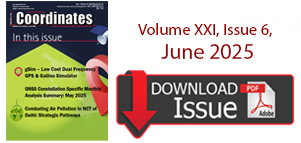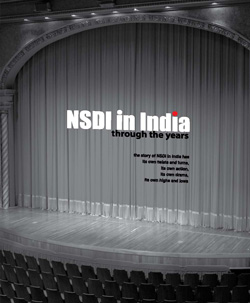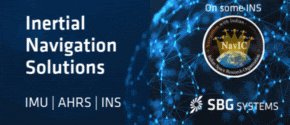Articles in the Geodesy Category

Continuously Operating Reference Stations (CORS) networks have been utilized for the last two decades in most developed and some developing countries by surveyors, geomatics and earth scientists and engineers. They handle Global Navigation Satellite System (GNSS) data which support three dimensional positioning not only

China has invested enormous effort in manned space engineering. The Tiangong-1 and Shenzhou-8 have been launched, twice rendezvouses have been accomplished successfully. In order to meet the requirements of the manned space engineering on the TT&C network, and prepare for our country’s space station construction

The Survey of India (SoI) is the pioneer surveying and mapping agency for India. The organisation conducts surveys at regular intervals and generates classified and nonclassified topographic map sheets using a polyconic system of projection. Modern applications are now demanding maps at higher scales and precision.

Even in 1996 it was reported that over half of the world’s population lived within 60 km of the shoreline (Turner et al, 1996). This trend has continued with an increase in the population in question. Small Island Developing States (SIDS), such as those in the Caribbean, tend to have much of their population live along coasts.

Geospatial Information Authority of Japan (GSI) is the governing institute on geodetic survey and mapping. It manages about 130,000 geodetic reference points in Japan and their survey results are consistent with the International Terrestrial Reference Frame. The recent development of GNSS technology led to more than 1,200 GNSS-based control stations with operation system called GEONET as new geodetic reference points.

Polar motion refers to the earth rotation axis and surface intersection point’s slow moving on the earth surface [1], realtime acquisition of polar motion is of great signifi cance to high precision satellite navigation, satellite laser ranging and deep space exploration. At present, the international high accuracy polar motion value is obtained through VLBI and SLR technology observation data calculation…

The geoid can be determined using different method such as gravimetric, astro-geodetic, GPS/ Levelling and “satlevel”. ‘Satlevel’ is a new method of geoid determination, in which the ellipsoidal height is used with orthometric height to model the geoid. Geoid modelling is a process of developing mathematical algorithms to represent the geoid. This is the reference surface for orthometric height. Geoid is one of the geodetic surfaces.













 (5.00 out of 5)
(5.00 out of 5)